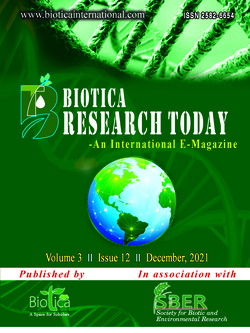
Seaweed Based Edible Packaging Materials for Food
Sarojini A.*
Paraprofessional Institute of Fisheries Technology, TNJFU, Madhavaram Milk Colony, Chennai, Tamil Nadu (600 051), India
Gajendra
College of Fisheries, KVAFSU, Mangaluru, Karnataka (575 002), India
Vijayarahavan V.
Dr. M.G.R. Fisheries College and Research Institute, TNJFU, Thalainayeru, Nagapattinam, Tamil Nadu (614 712), India
DOI: NIL
Keywords: Edible films, Edible packaging, Seaweed coatings, Seaweed polysaccharides
Abstract
Packaging is important for foods to protect it from any damage and keeps it safe until use. There are different varieties of packaging materials are used and plastic are the commonly used one among them. The use of plastic increasing significantly and it affects the environment very badly. It leads to accumulation in land and ocean and it is not biodegradable. So, there is a gaining interest to increase the use of biopolymers which are biodegradable. Recently, the application of seaweed polysaccharides gained importance because of its beneficial properties.
Downloads
not found
Reference
Bustos, R.O., Alberti, F.V, Matiacevich, S.B., 2016. Edible antimicrobial films based on microencapsulated lemongrass oil. Journal of Food Science and Technology 53, 832-839.
Wang, X.J., Guo, C.F., Hao, W.H, Ullah, N., Chen, L., Li, Z.X., Feng, X.C., 2018. Development and characterization of agar-based ediblefilms reinforced with nano-bacterial cellulose. International Journal of Biological Macromolecules 118, 722-730.
Zhou, X., Zong, X., Zhang, M., Ge, Q., Qi, J., Liang, J., Xu, X., Xiong, G., 2021. Effect of konjac glucomannan/carrageenan-based edible emulsion coatings with camellia oil on quality and shelf-life of chicken meat. International Journal of Biological Macromolecules 183, 331-339.
